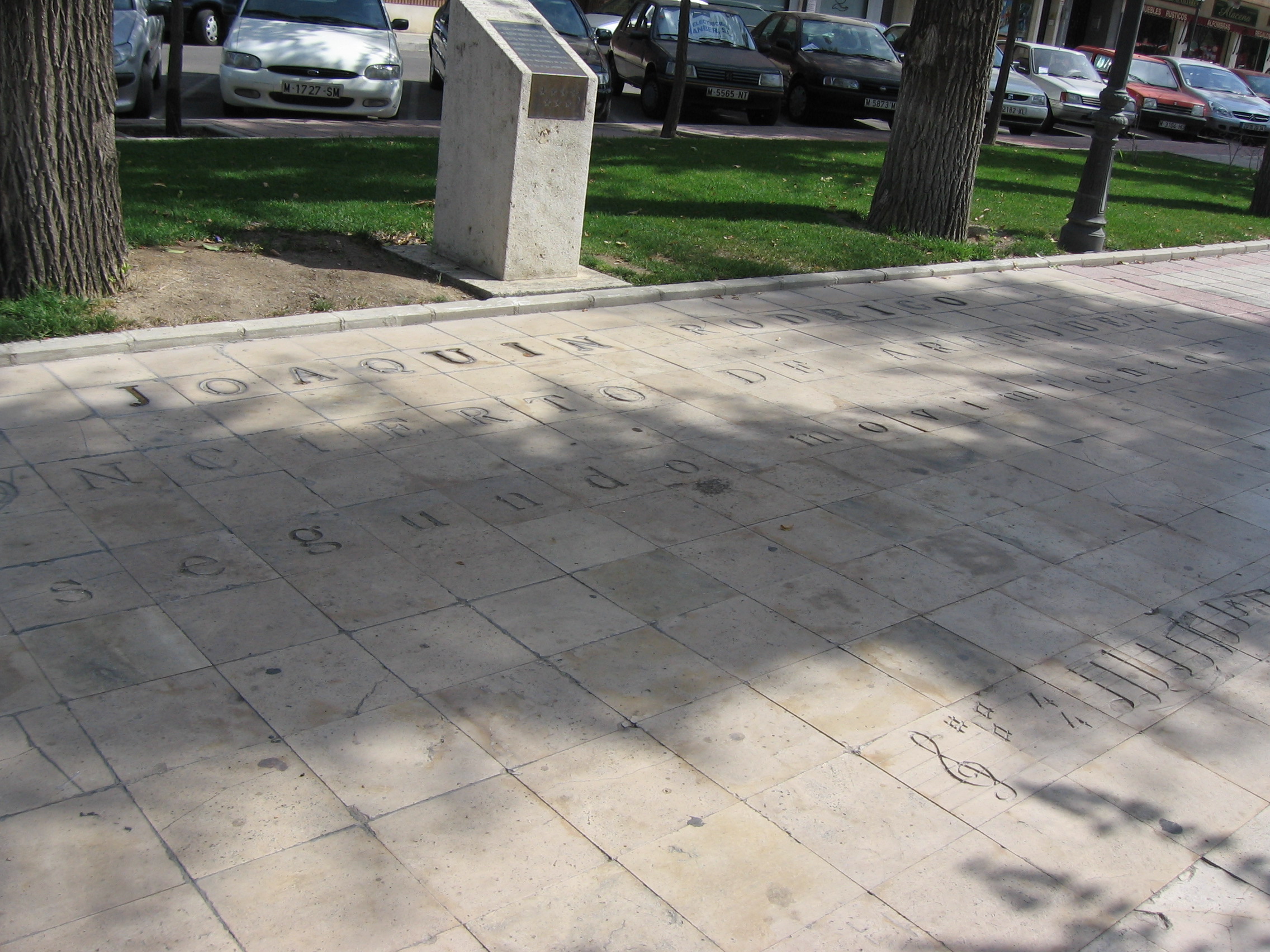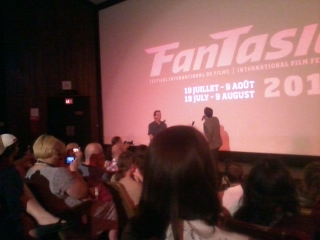|
Concierto Andaluz
The ''Concierto Andaluz'' (Spanish: ''Andalusian concerto'') is a concerto for four guitars and orchestra by Spanish composer Joaquín Rodrigo. First played in San Antonio, Texas, USA on 18 November 1967. Movements # Tiempo de Bolero # Adagio # Allegretto See also * Concierto de Aranjuez * Fantasia para un Gentilhombre * Joaquin Rodrigo * Spanish guitar References Fundación Victoria y Joaquín Rodrigo Concertos by Joaquín Rodrigo 1967 compositions Rodrigo Rodrigo is a Spanish, Portuguese and Italian name derived from the Germanic name ''Roderick'' (Gothic ''*Hroþareiks'', via Latinized ''Rodericus'' or ''Rudericus''), given specifically in reference to either King Roderic (d. 712), the last ... Guitar concertos Compositions in A major {{spain-stub ... [...More Info...] [...Related Items...] OR: [Wikipedia] [Google] [Baidu] |
Andalusia
Andalusia (, ; es, Andalucía ) is the southernmost autonomous community in Peninsular Spain. It is the most populous and the second-largest autonomous community in the country. It is officially recognised as a "historical nationality". The territory is divided into eight provinces: Almería, Cádiz, Córdoba, Granada, Huelva, Jaén, Málaga, and Seville. Its capital city is Seville. The seat of the High Court of Justice of Andalusia is located in the city of Granada. Andalusia is located in the south of the Iberian Peninsula, in southwestern Europe, immediately south of the autonomous communities of Extremadura and Castilla-La Mancha; west of the autonomous community of Murcia and the Mediterranean Sea; east of Portugal and the Atlantic Ocean; and north of the Mediterranean Sea and the Strait of Gibraltar. Andalusia is the only European region with both Mediterranean and Atlantic coastlines. The small British Overseas Territories, British Overseas Territory ... [...More Info...] [...Related Items...] OR: [Wikipedia] [Google] [Baidu] |
Concierto De Aranjuez
The ''Concierto de Aranjuez'' (, "Aranjuez Concerto") is a classical guitar concerto by the Spanish composer Joaquín Rodrigo. Written in 1939, it is by far Rodrigo's best-known work, and its success established his reputation as one of the most significant Spanish composers of the 20th century. Inspiration and history The ''Concierto de Aranjuez'' was inspired by the gardens at the Royal Palace of Aranjuez, the spring resort palace and gardens built by Philip II in the last half of the 16th century and rebuilt in the middle of the 18th century by Ferdinand VI. The work attempts to transport the listener to another place and time through the evocation of the sounds of nature. According to the composer, the first movement is "animated by a rhythmic spirit and vigour without either of the two themes... interrupting its relentless pace"; the second movement "represents a dialogue between classical guitar and solo instruments (cor anglais, bassoon, oboe, horn etc.)"; and t ... [...More Info...] [...Related Items...] OR: [Wikipedia] [Google] [Baidu] |
Concertos For Multiple Instruments
A concerto (; plural ''concertos'', or ''concerti'' from the Italian plural) is, from the late Baroque era, mostly understood as an instrumental composition, written for one or more soloists accompanied by an orchestra or other ensemble. The typical three- movement structure, a slow movement (e.g., lento or adagio) preceded and followed by fast movements (e.g. presto or allegro), became a standard from the early 18th century. The concerto originated as a genre of vocal music in the late 16th century: the instrumental variant appeared around a century later, when Italians such as Giuseppe Torelli started to publish their concertos. A few decades later, Venetian composers, such as Antonio Vivaldi, had written hundreds of violin concertos, while also producing solo concertos for other instruments such as a cello or a woodwind instrument, and concerti grossi for a group of soloists. The first keyboard concertos, such as George Frideric Handel's organ concertos and Johann Sebast ... [...More Info...] [...Related Items...] OR: [Wikipedia] [Google] [Baidu] |
1967 Compositions
Events January * January 1 – Canada begins a year-long celebration of the 100th anniversary of Confederation, featuring the Expo 67 World's Fair. * January 5 ** Spain and Romania sign an agreement in Paris, establishing full consular and commercial relations (not diplomatic ones). ** Charlie Chaplin launches his last film, ''A Countess from Hong Kong'', in the UK. * January 6 – Vietnam War: USMC and ARVN troops launch ''Operation Deckhouse Five'' in the Mekong Delta. * January 8 – Vietnam War: Operation Cedar Falls starts. * January 13 – A military coup occurs in Togo under the leadership of Étienne Eyadema. * January 14 – The Human Be-In takes place in Golden Gate Park, San Francisco; the event sets the stage for the Summer of Love. * January 15 ** Louis Leakey announces the discovery of pre-human fossils in Kenya; he names the species '' Kenyapithecus africanus''. ** American football: The Green Bay Packers defeat the Kansas City Chiefs 35–10 in the First AFL ... [...More Info...] [...Related Items...] OR: [Wikipedia] [Google] [Baidu] |
Concertos By Joaquín Rodrigo
A concerto (; plural ''concertos'', or ''concerti'' from the Italian plural) is, from the late Baroque era, mostly understood as an instrumental composition, written for one or more soloists accompanied by an orchestra or other ensemble. The typical three- movement structure, a slow movement (e.g., lento or adagio) preceded and followed by fast movements (e.g. presto or allegro), became a standard from the early 18th century. The concerto originated as a genre of vocal music in the late 16th century: the instrumental variant appeared around a century later, when Italians such as Giuseppe Torelli started to publish their concertos. A few decades later, Venetian composers, such as Antonio Vivaldi, had written hundreds of violin concertos, while also producing solo concertos for other instruments such as a cello or a woodwind instrument, and concerti grossi for a group of soloists. The first keyboard concertos, such as George Frideric Handel's organ concertos and Johann Sebastian B ... [...More Info...] [...Related Items...] OR: [Wikipedia] [Google] [Baidu] |
Classical Guitar
The classical guitar (also known as the nylon-string guitar or Spanish guitar) is a member of the guitar family used in classical music and other styles. An acoustic wooden string instrument with strings made of gut or nylon, it is a precursor of the modern acoustic and electric guitars, both of which use metal strings. Classical guitars derive from the Spanish vihuela and gittern of the fifteenth and sixteenth century. Those instruments evolved into the seventeenth and eighteenth-century baroque guitar—and by the mid-nineteenth century, early forms of the modern classical guitar. For a right-handed player, the traditional classical guitar has twelve frets clear of the body and is properly held up by the left leg, so that the hand that plucks or strums the strings does so near the back of the sound hole (this is called the classical position). However, the right-hand may move closer to the fretboard to achieve different tonal qualities. The player typically holds the lef ... [...More Info...] [...Related Items...] OR: [Wikipedia] [Google] [Baidu] |
Fantasia Para Un Gentilhombre
Fantasia International Film Festival (also known as Fantasia-fest, FanTasia, and Fant-Asia) is a film festival that has been based mainly in Montreal since its founding in 1996. Regularly held in July of each year, it is valued by both hardcore genre film fans, and distributors, who take advantage of the eclectic line up to select domestic and international films for release across North America. By virtue of the reputation developed over the last 15 years, this festival has been described as perhaps the "most outstanding and largest genre film festival in North America". Overview The history of the Fantasia Festival has roots in the Asian Film scene in Montreal. Beginning in 1996 where it screened Asian films from Hong Kong and Anime from Japan, the festival later expanded its international repertoire and screened genre films from all across the world. Since this time many world and international premieres have featured at Fantasia fest, including ''Shaun of the Dead'', ''Perfec ... [...More Info...] [...Related Items...] OR: [Wikipedia] [Google] [Baidu] |
Allegretto
In musical terminology, tempo ( Italian, 'time'; plural ''tempos'', or ''tempi'' from the Italian plural) is the speed or pace of a given piece. In classical music, tempo is typically indicated with an instruction at the start of a piece (often using conventional Italian terms) and is usually measured in beats per minute (or bpm). In modern classical compositions, a " metronome mark" in beats per minute may supplement or replace the normal tempo marking, while in modern genres like electronic dance music, tempo will typically simply be stated in BPM. Tempo may be separated from articulation and meter, or these aspects may be indicated along with tempo, all contributing to the overall texture. While the ability to hold a steady tempo is a vital skill for a musical performer, tempo is changeable. Depending on the genre of a piece of music and the performers' interpretation, a piece may be played with slight tempo rubato or drastic variances. In ensembles, the tempo is ofte ... [...More Info...] [...Related Items...] OR: [Wikipedia] [Google] [Baidu] |
Concerto
A concerto (; plural ''concertos'', or ''concerti'' from the Italian plural) is, from the late Baroque era, mostly understood as an instrumental composition, written for one or more soloists accompanied by an orchestra or other ensemble. The typical three-movement structure, a slow movement (e.g., lento or adagio) preceded and followed by fast movements (e.g. presto or allegro), became a standard from the early 18th century. The concerto originated as a genre of vocal music in the late 16th century: the instrumental variant appeared around a century later, when Italians such as Giuseppe Torelli started to publish their concertos. A few decades later, Venetian composers, such as Antonio Vivaldi, had written hundreds of violin concertos, while also producing solo concertos for other instruments such as a cello or a woodwind instrument, and concerti grossi for a group of soloists. The first keyboard concertos, such as George Frideric Handel's organ concertos and Johann ... [...More Info...] [...Related Items...] OR: [Wikipedia] [Google] [Baidu] |
Adagio (music)
In musical terminology, tempo ( Italian, 'time'; plural ''tempos'', or ''tempi'' from the Italian plural) is the speed or pace of a given piece. In classical music, tempo is typically indicated with an instruction at the start of a piece (often using conventional Italian terms) and is usually measured in beats per minute (or bpm). In modern classical compositions, a " metronome mark" in beats per minute may supplement or replace the normal tempo marking, while in modern genres like electronic dance music, tempo will typically simply be stated in BPM. Tempo may be separated from articulation and meter, or these aspects may be indicated along with tempo, all contributing to the overall texture. While the ability to hold a steady tempo is a vital skill for a musical performer, tempo is changeable. Depending on the genre of a piece of music and the performers' interpretation, a piece may be played with slight tempo rubato or drastic variances. In ensembles, the tempo is ofte ... [...More Info...] [...Related Items...] OR: [Wikipedia] [Google] [Baidu] |
Bolero
Bolero is a genre of song which originated in eastern Cuba in the late 19th century as part of the trova tradition. Unrelated to the older Spanish dance of the same name, bolero is characterized by sophisticated lyrics dealing with love. It has been called the "quintessential Latin American romantic song of the twentieth century". Unlike the simpler, thematically diverse '' canción'', bolero did not stem directly from the European lyrical tradition, which included Italian opera and canzone, popular in urban centers like Havana at the time. Instead, it was born as a form of romantic folk poetry cultivated by a new breed of troubadour from Santiago de Cuba, the ''trovadores''. Pepe Sánchez is considered the father of this movement and the author of the first bolero, "Tristezas", written in 1883. Originally, boleros were sung by individual ''trovadores'' while playing guitar. Over time, it became common for trovadores to play in groups as ''dúos'', ''tríos'', ''cuartetos'', ... [...More Info...] [...Related Items...] OR: [Wikipedia] [Google] [Baidu] |



.jpg)
